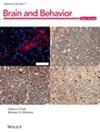Exploring Graph Theory Mechanisms of Fluid Intelligence in the DLPFC: Insights From Resting-State fNIRS Across Various Time Windows
Abstract
Background
Brain imaging technologies can measure fluid intelligence (gF) levels more directly, objectively, and dynamically, compared to traditional questionnaire scales. To clarify the temporal mechanisms of graph theory in measuring gF, this study investigated the relationship between graph theoretical indicators in the dorsolateral prefrontal cortex (DLPFC) and gF levels under various time windows.
Methods
Using 30-min resting-state fNIRS (rs-fNIRS) data and Raven's Advanced Progressive Matrices from 116 healthy participants, the relationship between individual gF levels and DLPFC brain signals was analyzed using average degree (AD) and global efficiency (Eglob).
Results
AD and Eglob in the resting-state DLPFC were significantly negatively correlated with the RAPM score. Considering the effectiveness and efficiency of gF measurement, a 2-min data collection might suffice, while for Eglob, more than 15-min collection was more effective.
Conclusion
These findings help clarify brain indicators and demonstrate the effectiveness of rs-fNIRS in intelligence measurement, providing a theoretical and practical basis for portable and objective gF assessment .


 求助内容:
求助内容: 应助结果提醒方式:
应助结果提醒方式:


